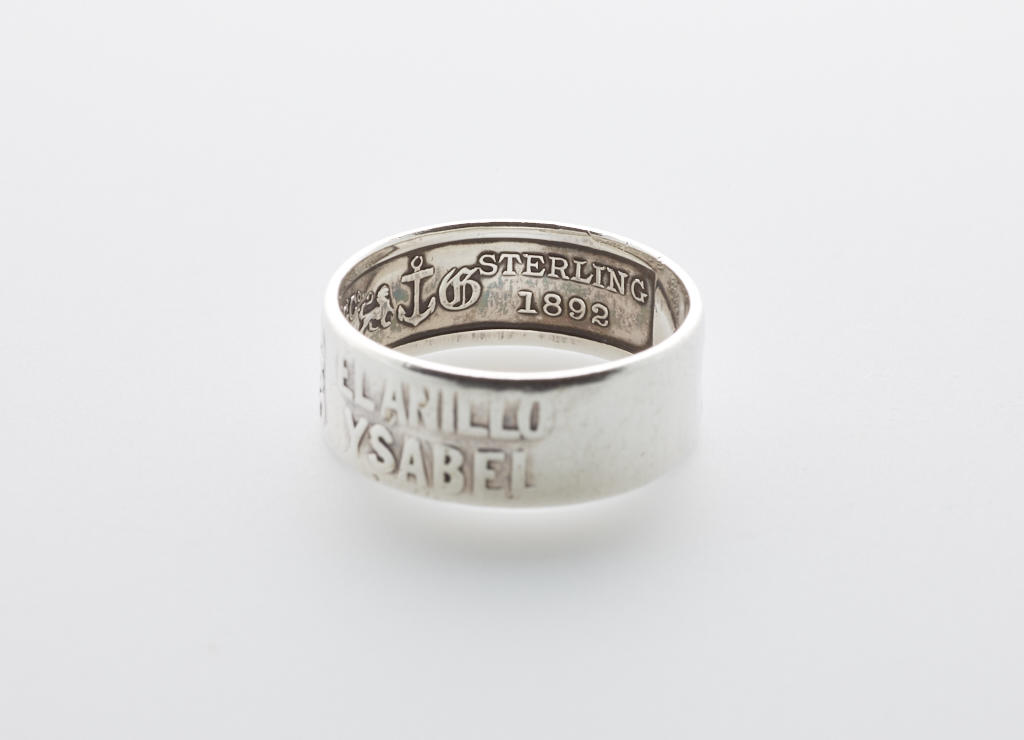The American and European jewelry collection at the RISD Museum, part of the Decorative Arts and Design Department, is made up of more than 800 works, including necklaces, earrings, bracelets, and rings from the medieval period to present day.
The RISD Museum has been collecting jewelry since 1902, when the first works entered the collection: three Victorian-era (1837–1901) brooches (02.007, 02.008, 02.009). Their oval forms each display an image of a mourning female figure on top of a braided lock of hair. Examples like these are commonly known as mourning jewelry, which was made using the hair of the deceased and distinguished by symbols of death and mourning such as skulls, urns, and weeping willow trees. They often contain inscriptions with the name, date, and a message about the departed and were worn as a symbol of remembrance by a family member or loved one. Not all jewelry made of hair, however, was about death. For instance, a mother might have had a bracelet made from the hair of her children or husband as a token of love. The museum has more than 30 pieces of jewelry made of hair, ranging from simple brooches (39.052) to elaborate compositions with enamel and gold (26.404).
Jewelry can be found on display throughout the museum. Some of the best examples of jewelry from the 18th and 19th century can be seen in the European Galleries. Here you will find a variety of materials and techniques including carved lava (80.084.7), enamel (29.031), and micromosaic (67.269). These exquisitely crafted works represent the types of jewelry individuals would have purchased as souvenirs during travels throughout Europe.

Providence, Rhode Island, was once the epicenter of the costume jewelry industry, and known as the “jewelry capital of the world.” In the 1800s, silversmiths tapped into a new market when they began making small pieces of jewelry to sell alongside spoons and teapots. Artists and manufacturers soon flocked to Providence to make and sell affordable jewelry. The Gorham Manufacturing Company, established in Providence in 1831, was once the world’s largest silver manufacturer, and got their start making small silver wares, including jewelry. As business grew, their jewelry ranged from simple forms in silver (2003.82) to complex commissions with gold, enamel, and precious stones (1997.80).

At the RISD Museum, we recognize that the process of design is equally as important as the final product. We strive to collect and display models and design drawings that highlight different methods by which designers work through their ideas to become reality. An extraordinary collection of jewelry design drawings by William Edgar Brigham (1885–1962), a RISD student then professor in the early 20th century, includes everything from iterative sketches (63.011.299, 63.011.293, 63.011.234) to refined presentation drawings (63.011.227). Some design drawings in the collection demonstrate the spontaneity of the process (2016.103.1), while others are more considered (1996.79.7).

The RISD Museum’s collection also houses examples of an unusual jewelry type: the celebratory chain of office (1994.053) that is worn by the president of RISD every spring at commencement. A second RISD chain of office in the collection, which is no longer in use today, was made specifically for former RISD president Lee Hall (2015.113). You can find out more information about the history of these works and their traditional uses here.

Contemporary jewelry at the RISD Museum represents a union of traditional and avant-garde materials, techniques, and forms. Wood, paper, and glass mix with metals and gemstones to create examples that blur the boundaries between adornment and wearable art. A selection of 20th- and 21st-century jewelry can be viewed in Pendleton House’s Parsons Silver Gallery, which includes RISD faculty and alumni such as Barbara Seidenath (2001.21.2ab), John Prip (2001.57.51), and Kay Whitcomb (2018.51.1).

The RISD Museum continues to actively collect both historic and contemporary jewelry. Several recent gifts to the collection have made a significant impact on our holdings, including works by Marjorie Schick and Betty Cooke. In addition to receiving gifts of artwork, the RISD Museum is committed to prioritizing purchase acquisitions by artists of color and has recently acquired two necklaces by Black female artists. The first is Joyce J. Scott’s Family, in which she portrays a family with different skin tones connected through undulating waves of blue. She created it by hand-weaving glass beads using a technique known as peyote stich. This technique and design incorporates three-dimensional figures is unlike any other work of jewelry in the museum’s collection.

Our second new acquisition is Sonya Clark’s Hair Necklace 4 (Chain), a modern take on traditional Victorian-era hair jewelry. Clark uses the medium of hair prominently in her work to examine individuality, race constructions, and how notions of beauty in relation to hair have shaped the African American community. Unlike historic hair jewelry, which was made with the hair of one person, Clark uses her own hair and the hair of her family and friends in her work, imbuing each piece with a strong sense of community. Both of these recent acquisitions can be viewed in the Paula and Leonard Granoff Modern and Contemporary Galleries beginning in Fall 2020.


